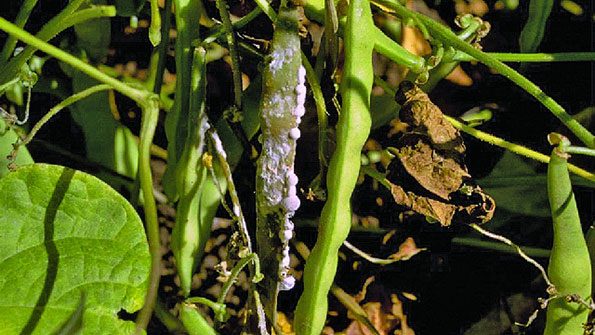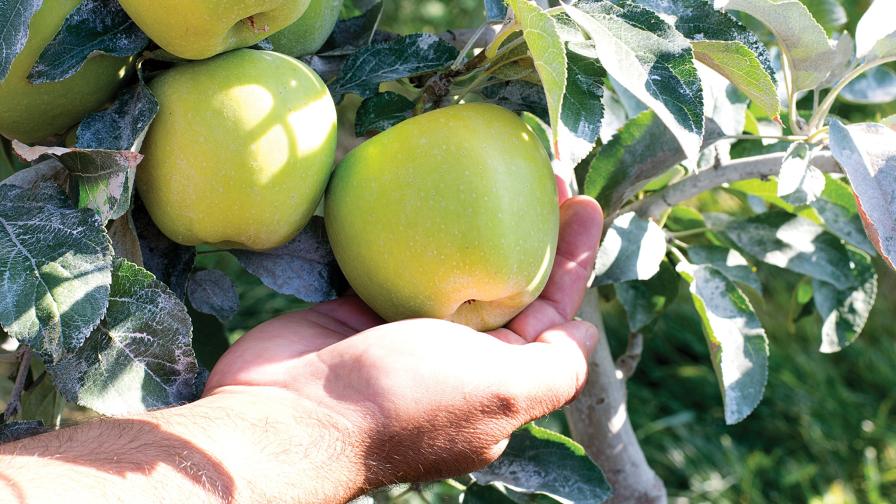Spot Sclerotinia Before It Stops Your Vegetable Crop
The fungus Sclerotinia sclerotiorum is responsible for a number of vegetable diseases attacking a wide range of crops. Common names for Sclerotinia diseases in Florida are white mold (beans), drop (lettuce), timber rot or white rot (pepper, potato, and tomato), and nesting (postharvest disease of bean).
Identification
A good indicator of Sclerotinia disease is the presence of small, black sclerotia (resting structures) of the fungus. Sclerotia can form on the surface of plant parts as well as inside the stems of pepper and tomato. The sclerotia enable the fungus to survive from season to season and are the source of inoculum to infect crops.
Another common indicator of Sclerotinia diseases is the presence of white, cottony-like mycelium of the fungus when weather conditions are cool and moist.
Symptoms vary between crops. White mold in beans usually appears after flowering. The disease often appears in leaf axils and advances into the stem, producing water-soaked spots that increase in size, girdling the stem, and killing it above the point of infection. The disease also can enter the plant through leaves or pods that touch the soil where sclerotia or infected plant parts act as inoculum.
In tomato, potato, and pepper, infection typically starts at flowering. Water-soaked spots are usually the first symptom, which is followed by invasion of the stem, girdling, and death of the upper part of the stem that turns a light gray. The disease also can begin where the plant contacts the soil or infected plant debris. Large portions of the field may become diseased, producing large, circular areas of dead plants.
Almost all Sclerotinia diseases are field diseases. However, when they occur in postharvest situations, they can be very damaging. In beans, the fungus may create a mass of diseased pods that is stuck together by fungal growth, resembling a nest (hence, the name “nesting”).
Survival and Spread
Under cool moist conditions, the fungus is capable of invading a host plant, colonizing nearly all of the plant’s tissues with mycelium. Under wet conditions, S. sclerotiorum will produce an abundance of mycelium and sclerotia. The fungus can survive in the soil primarily on the previous year’s plant debris.
High humidity and dewy conditions support the spread and increases the severity of infections.
The fungus produces a survival structure called a sclerotium on or inside the tissues of a host plant. When conditions are favorable, the sclerotia will germinate to produce fruiting bodies. These produce ascospores, which then germinate on the host and begin to invade the host’s tissues via mycelium, causing infection.
Once a plant is infected white mycelium will grow on the surface of the infected tissues. At the end of the season, sclerotia are produced. The sclerotia will then remain on the surface of the ground or in the soil until the next season.
Management Methods
Four to five weeks of flooding of fields that have a history of Sclerotinia diseases may help reduce the numbers of viable sclerotia, thereby reducing the amount of disease in succeeding crops.
Recycled irrigation water may move sclerotia to fields where sclerotia are not present. The use of plastic mulch may suppress Sclerotinia diseases; while high plant populations may increase the incidence.
Consult UF/IFAS recommendations for currently labeled fungicides for Sclerotinia management in Florida vegetables.











